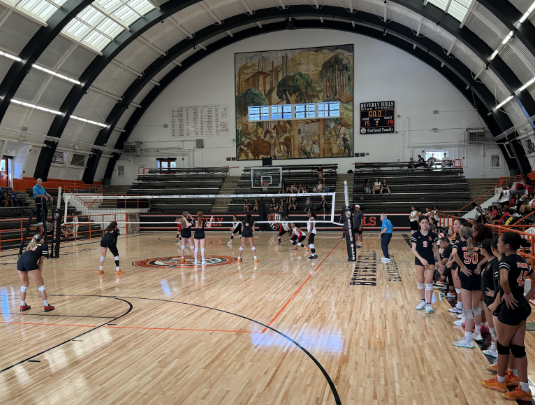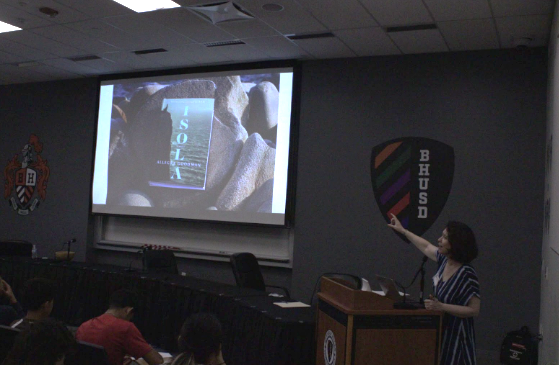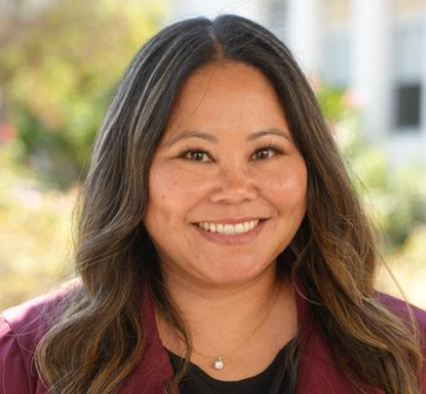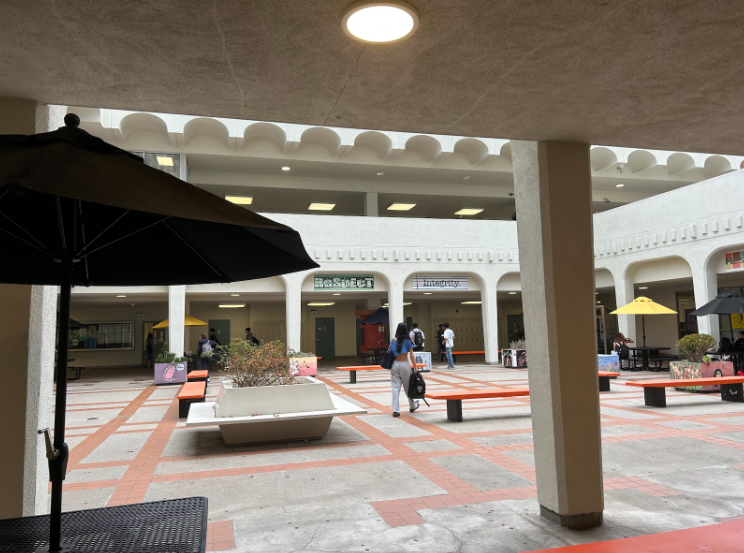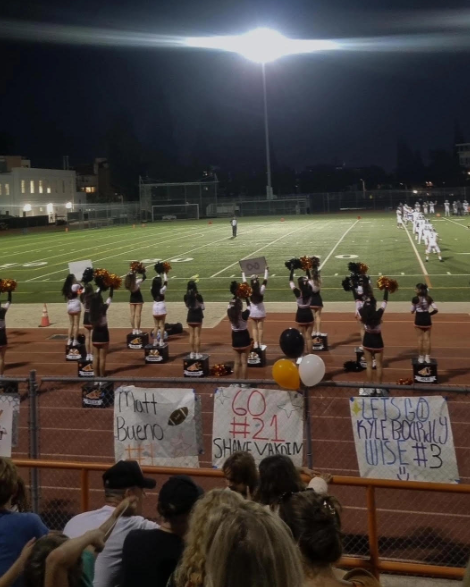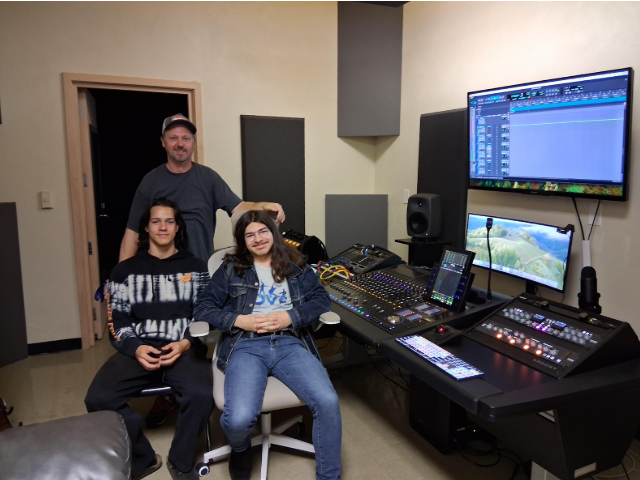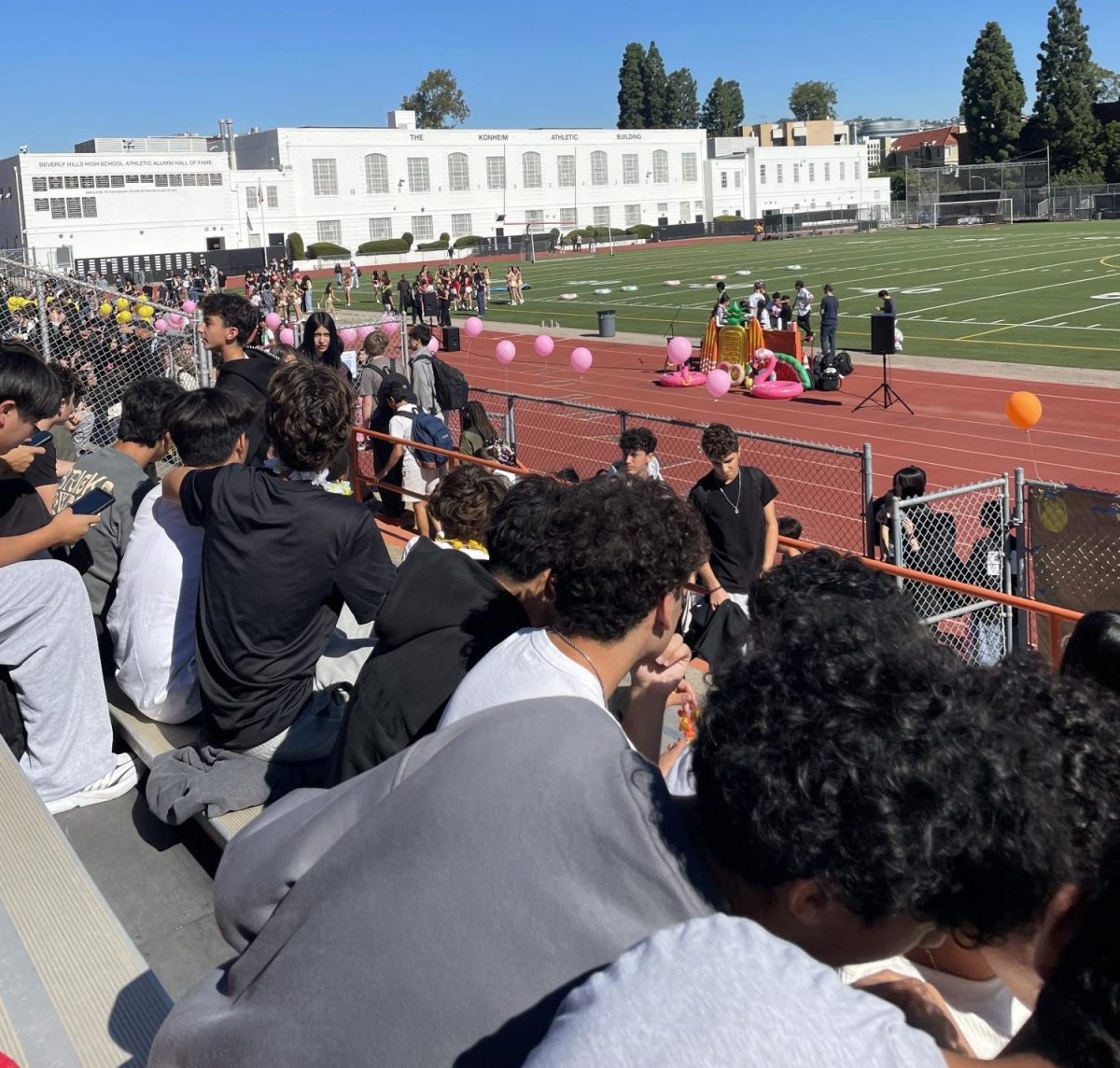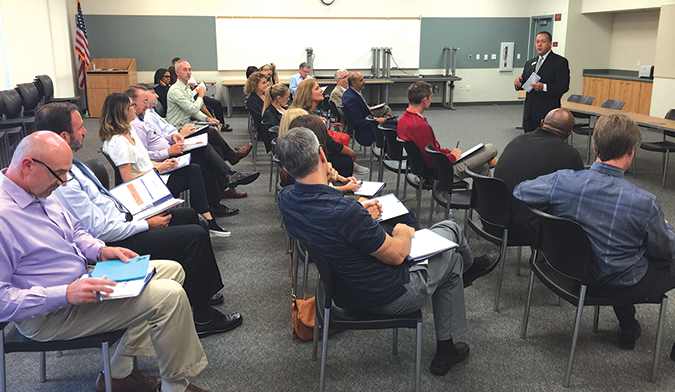Brian Harward staff writer
Evan Minniti staff writer
AJ Wolken staff writer
Since separating from the Los Angeles school system in 1936, the Beverly Hills Unified School District (BHUSD) has been a system of four kindergarten through eighth grade schools, known as a K-8 model, that all funnel into one high school. Discussions about reconfiguring this system to a K-5 system, with three elementary schools and a separate middle school, have been brought up in the past; it wasn’t until the recent deficit problem that any reconfiguration plans had been seriously discussed. However, on Jan. 30, the Board of Education will vote on the proposed reconfigurations.
In a community as involved and diverse as Beverly Hills, there are countless perspectives, opinions and arguments on reconfiguration. The Future Focused Schools Team (FFST) was tasked by the Board with creating different models for such a reconfiguration. Consisting of 22 members, ranging from community members to administrators, FFST recommends transitioning away from the K-8 system in favor of a designated middle school and three K-5 schools.
How we got here
The current discussion about reconfiguring the school district has been prompted mainly as a way to counteract deficit spending. Currently, the district’s budget projections show that they are running a $5 million dollar deficit. El Rodeo principal and FFST member Kevin Allen believes that the K-8 system is an excellent system in theory, but it bears a financial burden on the district that has worsened recently.
“[Reconfiguration] came up in 1991, it came up again in 2003 or somewhere around then, and finally now. The reason [for Reconfiguration is] financial. It is cheaper to run a middle school than what we are running right now,” Allen said. “[K-8] is the most expensive model that we are running…it is kind of like the Bentley.”
When being faced with financial burdens such as this in the past, the district made minor changes such as teacher layoffs or eliminating courses to save money. Superintendent Michael Bregy thinks that these solutions have been short-term and ineffective, and that a structural change could solve the district’s financial issues
“Every year we go through this period in March where we pink slip teachers, and everyone cries, and goes to the board and they are fired. Then we hire some back and then we wait and repeat next year. It’s because we have a structural problem and we’re putting a Band-Aid on fixable problems, and that’s horrible for the morale of this district,” Bregy said. “We’re not getting the best of the best when new teachers don’t want to come to Beverly Hills. How many years can we keep doing this? Let’s fix this–it’s fixable.”
According to La Tanya Kirk-Carter, Assistant Superintendent of Business Services, though the district is currently on an unsustainable fiscal path, reconfiguration addresses a more fundamental issue with the district’s finances.
“Even if there was no projected budget deficit, I would still say, ‘Why are we doing this? Why are we spending this money so inefficiently?’” Kirk-Carter said.
While there is a financial component in the decision, board member Noah Margo believes the well-being of the students should be prioritized over the potential money issues when confronting the idea of reconfiguration.
“The question is are we delivering the best education with four campuses for the K-8s, or are there other ways, hence the word reconfigure, to deliver education better? For me, it’s first and foremost about how we’re servicing the students, not about saving money. Because budgets are in flux every three months anyway. They are projections. The projections shrink, the deficits shrink…” Margo said.
Margo referred to the 2015-2016 budget where the projected deficit was $2.5 million, but only ended up being $37,130.
Benefits and issues of a K-8
According to Allen, the current K-8 model has benefits for students socially, as it keeps them in a consistent, comfortable environment for an extended amount of time, but is not the best option for academic rigour in the context of the BHUSD.
“[The K-8 model] provides the least amount of academic rigour and potential. There are benefits to the K-8 model that are more social and emotional. Like, I can’t say it keeps kids younger for longer because it really doesn’t, but it definitely coddles them a little more. Our kids are definitely more coddled, there is no doubt about it,” Allen said.
Allen thinks that the district could create an appropriately rigorous academic environment in the K-8 system if the district had a much larger student population. But with the issue of declining enrollment (4,900+ in 2010 vs. 3,924 today), Allen believes it becomes more difficult to establish a K-8 system with proper preparation for the harsh academic demands of high school.
“Think about school kind of like this: elementary school being a tricycle. Middle school is training wheels. High school, the wheels are off. In a K-8, you are kinda a hybrid between the tricycle and the training wheels. So, you are not as rigorous as a regular middle school would be,” Allen said. “It is not fully a secondary environment. Does that make sense? When you put students in that fully secondary environment, what you end up with is intrinsically a more rigorous place. I want to say that a K-8 could be that way. We can do that in a K-8, but not with the number of students we have.”
Assistant Superintendent of Academic Services Dustin Seemann thinks that under the current K-8 system, the jump from middle school to high school is abnormally large, which makes it difficult for students to perform well in their freshman year while also adopting the social and study skills for their new learning environment.
“From a transition standpoint, now our first major jump is into ninth grade where you meet all of these new people, and it can be overwhelming but ninth grade counts just as much on your college apps. So shock happens while you’re [establishing] your GPA and your habits and your social skills,” Seemann said.
On the other hand, local parent and USC psychology professor Lisa Aziz-Zadeh is adamant that the research shows that the K-8 system is better for the students not only socially and emotionally, but also academically.
“Given the bombardment of [numerous] physical and psychosocial transitions, research has shown that it is better to keep other transitions, like going to a new school such as a middle school, at a minimum,” Aziz-Zadeh said. “This is why study after study after study shows that K-8 models are superior both psychologically, socially and academically for children. You will have less anxiety, depression, suicidal thoughts and bullying, and consequently higher performance on academics in the K-8 environment.”
Benefits and issues of a consolidated middle school
Community member and mother of two BHUSD students Jenna Frankel sees the consolidated middle school as the best option because, among other things, it could smooth the sometimes difficult transition from middle school to high school for students.
“The transitions would be better, so some of the mistakes could be made in middle school instead of in high school. Interest could be cultivated, which would make our kids’ high school education richer and therefore sending them with passions maybe to better colleges,” Frankel said.
When looking at the big picture, Margo is adamant that change is necessary. Otherwise, the current educational and financial issues will only worsen.
“If we don’t do something…every student is going to suffer from the same thing that every student has been suffering from all along, and that is lack of accessibility to quality education, lack of opportunities, lack of choices and a lack of parity in programming,” Margo said. “You have different middle schools in different sites that can afford different things and therefore students get different opportunities. And that is just wrong. We are a unified school district.”
BHEA president Telly Tse expressed that faculty members may have difficulty supporting a quick reconfiguration because if the process were to be put into effect this fall, layoffs would be guaranteed.
“Nobody wants to lose their job, nobody wants to see their colleagues lose their jobs. And so, the support for reconfiguration from the majority of the staff is conditional. And the condition is that it should be done over time, make sure it is done properly with the right facilities in place, and certainly should not be rushed,” Tse said. “So, the bottom line is if there are as little or no cuts as possible, if there is as little or no involuntary transfers as possible, then you will see that most teachers are in support of reconfiguration.”
Community Outcry
In the wake of the discussions on reconfiguration, there has been an outpour of polarization in the community. Allen, though admitting he hasn’t looked at any polls, believes that the majority of elementary and Beverly Vista (BV) parents are openly opposed to the plans, mainly because construction is over at BV.
“Our elementary parents are definitely overwhelmingly against it. The Beverly Vista community is probably the most against it. The reason is that they really have everything to lose,” Allen said. “Their school has no construction, they are pretty much set as they are. Horace Mann is right in the middle of [construction], Hawthorne is probably going to go through it. But BV is done [with construction]…[Beverly Vista] kind of has it made right now. They don’t really want to [sacrifice] that.”
This resistance to the reconfiguration plans has expressed itself through two petitions on Change.org, one outright asking opposing reconfiguration (which is more than halfway to meeting its goal of 1,000 signatures) and another asking the board not to vote on reconfiguration this year (at the time of writing had 431 out of 500 signatures). A website devoted to protesting reconfiguration was also set up.
The FFST held two community forums on Jan. 16 and 17 to open a conversation with the community about the process and field the opinions of concerned parents. The first night of the forum was a presentation to the community about the facts behind reconfiguration, while the second night was geared toward hearing community members’ concerns. Sean Nassirzadeh, leader of the FFST group assigned to research the social aspects of reconfiguration, felt that the forums gave the FFST some insight into the frustration of the community.
“The meetings may have released some pressure, but we still are a community with distrust in the BHUSD board. It is sad, but the BHUSD board from the past 10 years has contributed much to this mistrust…It seems that there are board members that care more about being right than doing right,” Nassirzadeh said.
The Decision
After several weeks of research and gathering information, the Future Focused Schools Team presented their data and recommendation to the school board at the board meeting on Tuesday, Jan. 23. In the end, they encouraged the board to switch to a model where the district would transition to running three K-5 schools and one dedicated middle school.

The school board will be given its first opportunity to vote on the issue at the board meeting on Jan. 30, but it doesn’t have to reach a decision by that day.
“We are scheduled to take a vote on the 30th, but we don’t have to. We can say, ‘I want more information. We’ll do it in the middle of February.’ In the end it will be a vote to either take the options, create a new option or table the whole discussion,” Margo said.
Even if the board takes the suggestion of the FFST and votes to create a dedicated middle school with three K-5 schools, there is a whole new process that would begin in order to plan and execute this major change in the most efficient way possible. According to Margo, an adjustment of this magnitude would not go into full effect as soon as next school year.
“There’s physically no way to have a dedicated middle school in August. That can’t happen. So if ever the choice is made by the board to go to a dedicated middle school model, that’ll take years of planning and execution,” Margo said.
In the midst of the controversy and chaos that surrounds reconfiguration, Bregy is hopeful that the board will agree on a decision to minimize further complications.
“The board splitting on this decision is what keeps me up at night–I’m not kidding. The problem with that is that you have elected officials who don’t agree on the vision of our school district and that would be absolutely devastating,” Bregy said. “On something this big, this historical in nature, I would hope that the board would be united.”
To learn what we Highlights thinks about the issue check out our recent editorial post
Timeline on past reconfiguration efforts in the district
Categories:
District reconfiguration talks cause community uproar
January 26, 2018
0
Tags:
Donate to Highlights
$125
$1000
Contributed
Our Goal
Your donation will support the student journalists of Beverly Hills High School. Your contribution will allow us to purchase equipment and cover our annual website hosting costs.
More to Discover








